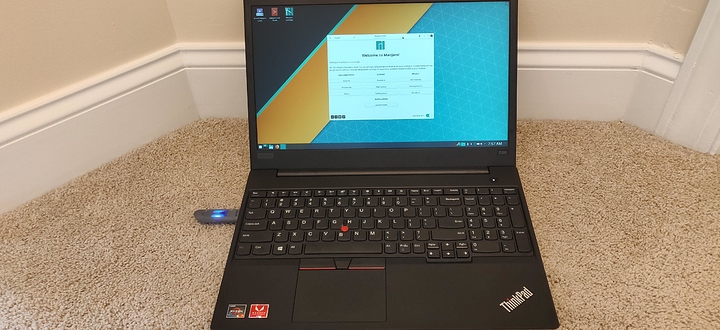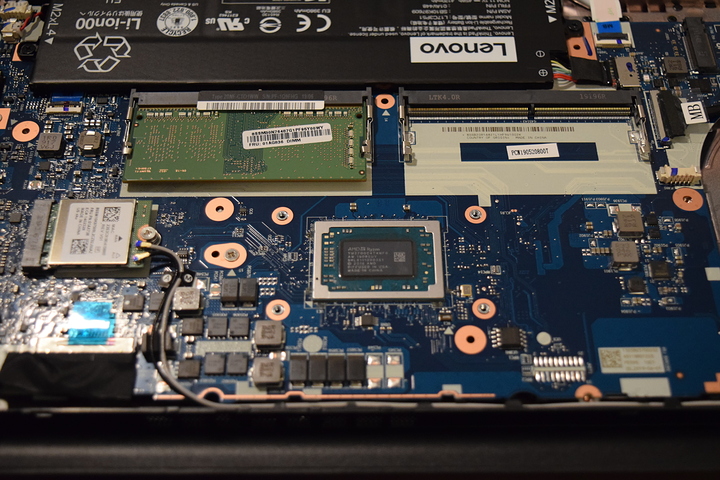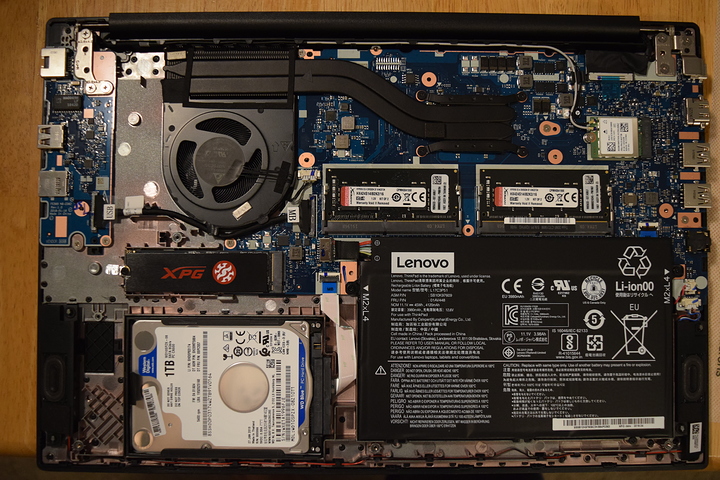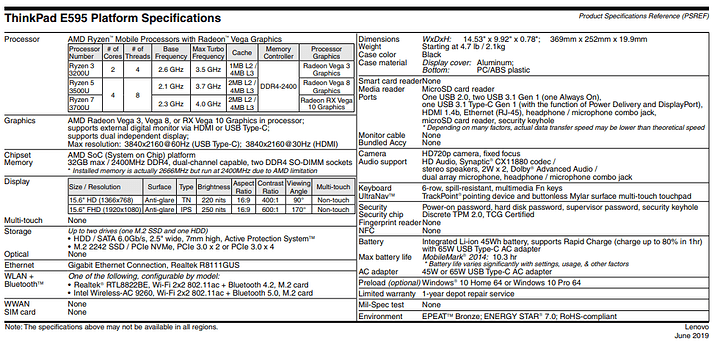So as a fresh high school graduate going to college for a computer science program very soon, I like many others thought that now would be a very good time to purchase a laptop. My requirements aren’t too heavy. Since I want to run Linux and also run a windows vm in case the school needs me to run any windows only programs, I would need something with at least 2 cores. Fortunately both Intel and AMD have quad cores available in many laptops. I don’t play much games but it would nice for my laptop to be able to run some light games. Since I am running linux, I need something with decent integrated graphics as switchable graphics is not supported well under linux which means a laptop with a ryzen apu would be best.
I decided to purchase an Lenovo E595 since Lenovo had just released this new model with the new refreshed Ryzen 3000 APUs. I bought the laptop with only the top APU and 1080p IPS display and cheaped out on everything else since I could save a few hundreds of dollars by upgrading the other parts myself and more with a coupon. I will refer to the out of box configuration as the ‘stock’ configuration and the configuration with the added parts as the ‘upgraded’ configuration. Also I must thank r/sacabonos from reddit for the tip to fix nvme more on that latter.
TL;DR This is an amazing laptop. Much better than my old one. Lenovo fixed the Linux issues from the previous E4/585 but Linux setup needs kernel parameter to work with my nvme ssd. WiFi and BT just works. Also make sure you use dual channel RAM.
‘Stock’ configuration as purchased:
APU: AMD Ryzen 3700U with Vega 10 Mobile graphics
RAM: 1x4GB Samsung 2666 cl17
Storage: 1TB 5400RPM Hard Drive
Display: 1080P IPS 250 Nits
‘Upgraded’ configuration:
RAM: 2x8GB HyperX impact 2400 cl14
Storage: 1TB Adata SX8200 pro.
Subtotal was about $800 but I used the coupon THINKPADSAV20 which saves me 20% so my total without tax was around ~$650. An awesome deal! Along with it I bought an Adata SX8200 pro 1tb ssd and 16GB of the best ram for this laptop, HyperX Impact 2400 cl14. In total I have spent around $900.
The build quality of this laptop is very good. The IPS display is totally worth the small extra cost though free-sync would be highly desired. It is clear and have very good viewing angles. The laptop is made with aluminum for the screen and plastic everywhere else. There is little flex on the keyboard and the buttons feel nice to type on.
There are a few things that I dislike about the E595. The battery wasn’t improved from the last generation’s 45 watt hour so it still only lasts around 4-5 hours. Luckily the charger is small enough though to carry around. Another problem is that the area where your right palm rests on can get hot.
I ran some benchmarks and tests in Windows in the ‘stock’ configuration and in the ‘upgraded’ configuration.
Opening up the laptop is not very difficult. There are 9 small phillips head screws that are non-detachable from the plastic back so just loosen them and start to pry open the tabs holding the cover.
Here are some photos.
As you can see the internals are exactly the same as the previous E585.
I replaced the stock thermal paste with Thermal Grizzly Kryonaut which is one of the best non-conductive pastes. When testing the temps under full CPU load the max temp was 83 degrees Celsius and 81.5 degrees Celsius with Kryonaut. With only a one and a half difference the stock paste Lenovo uses is pretty good.
Now for the benchmarks. I used Cinebench r15 and Unigine Superposition.
‘Stock’ Scores:
Cinebench:
OpenGL: 31.98 fps
CPU single: 144cb
CPU multi: 633cb
Superposition (1080P Medium): Freezes when loading with only 4gb of ram.
‘Upgraded’ Scores:
Cinebench:
OpenGL: 46.18 fps
CPU single: 145cb
CPU multi: 705cb
Superposition (1080P Medium): 1202
Enough with the windows benchmarks. I know most people are interested, myself included, in how this laptop runs Linux. So lets break open the window and toss in the penguin. 
The previous E585 had BIOS problems that made running Linux more difficult but not impossible. I have good news and bad news. The good news is that Lenovo fixed that problem in this model and most likely in the E/T485 as well. The bad news was that I encountered other minor obstacles. The first one was that on booting Manjaro 18.04 caused the laptop to be stuck on loading ‘TLP system startup/shutdown’. I’m not sure if this also effects other Linux distros but the problem was fixed in newer kernels so I downloaded the release candidate for 18.1 and it booted successfully.
The next problem was when I was selecting which drive to install to. Manjaro failed to detect my Adata sx8200 pro nvme ssd. Luckily, r/sacabonos said that the solution to fix this issue was to add this to the kernel parameters: ‘nvme_core.default_ps_max_latency_us=5500’
To add this, once the laptop boots into grub you need to press ‘e’ with the Linux OS to boot selected and add ‘nvme_core.default_ps_max_latency_us=5500’ to the end of the line that starts with ‘Linux’. You only need to do this twice, once for installation and the first boot after, then you can add the parameter mentioned above to the grub configuration in the ‘GRUB_CMDLINE_LINUX_DEFAULT=’ line then run sudo update-grub so you don’t have to worry about this problem again.
After these small issues, Linux is running well. The built in WiFi and Bluetooth works when running Manjaro 18.1-rc1 and Kubuntu 19.04. The only other small issue is that the track-pad doesn’t feel smooth and accurate like in windows. If anyone could provide suggestions on getting the track-pad to behave windows like please comment.
Overall am glad I made the decision to purchase this laptop. I believe it will serve me well in college and after.





